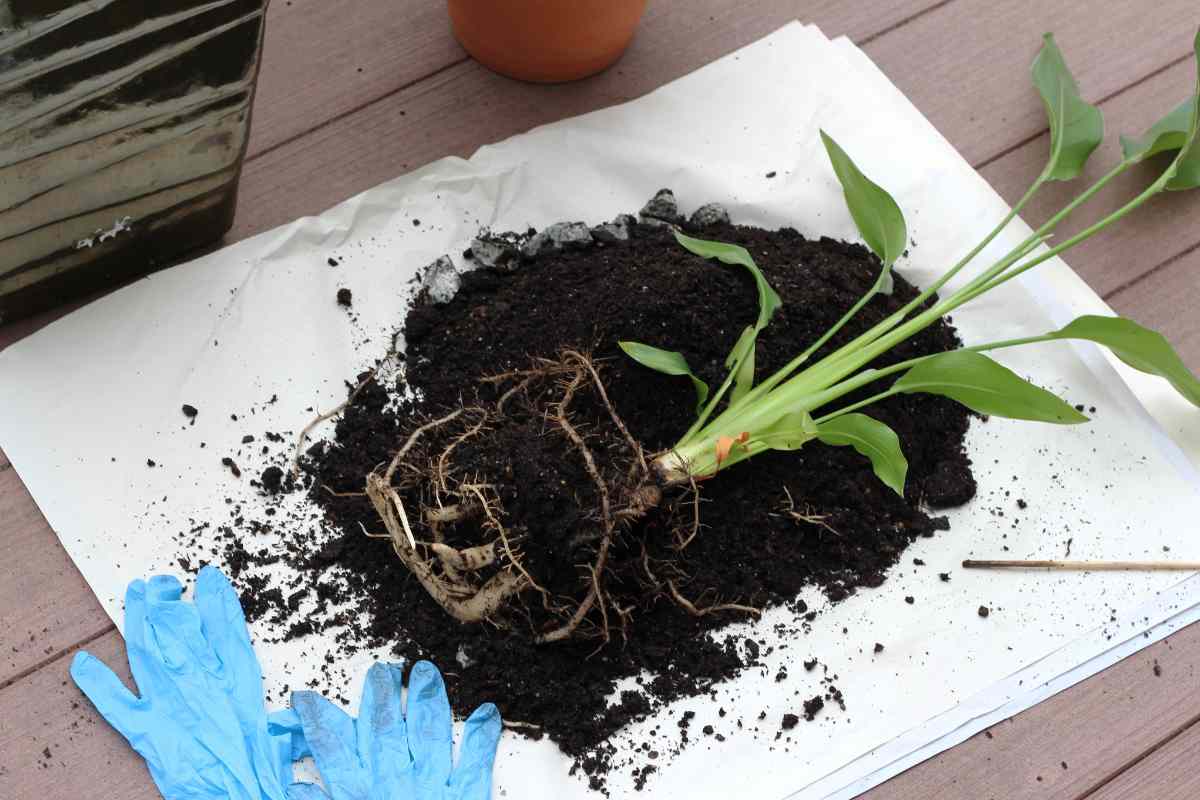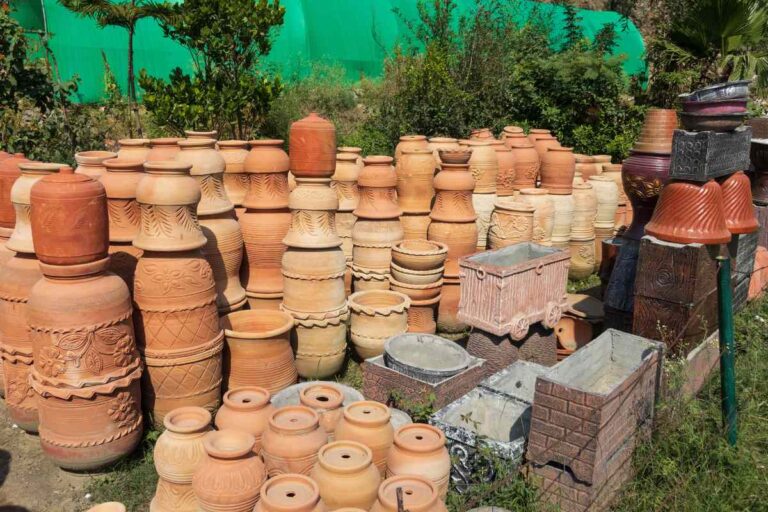Pot For Bird Of Paradise
Are you looking to give your bird of paradise plant a fresh start? Repotting it in the right pot can do wonders for its growth and overall health.
In this article, we will discuss the benefits of repotting your bird of paradise and guide you through the process step by step. Repotting your bird of paradise can provide several benefits. It allows for better root development, ensures proper drainage, and gives your plant more room to grow. By choosing the right pot and soil, you can create an ideal environment for your bird of paradise to thrive.
Transferring your bird of paradise to a new pot may seem daunting, but with our easy-to-follow instructions, you’ll be able to do it with confidence. We will also provide tips on how to care for your repotted plant and troubleshoot common issues that may arise.
Pot For Bird Of Paradise

So get ready to give your bird of paradise a fresh start! Let’s dive into the world of pots for bird of paradise plants and watch them flourish in their new homes.
Benefits of Repotting Your Bird of Paradise
Repotting your bird of paradise will give its roots the much-needed room to spread out and explore, like a dancer stretching her limbs on a spacious stage. The benefits of repotting are numerous.
First, it allows for better nutrient absorption as the fresh potting mix provides a rich source of nutrients. This leads to healthier growth and vibrant foliage.
Second, repotting helps prevent root-bound plants, where the roots become tangled and restricted within their current container. By providing more space, you allow the roots to develop freely and establish a stronger foundation.
Lastly, repotting also gives you the opportunity to inspect the health of your plant’s roots and address any issues such as rot or pests.
There are various repotting techniques available, such as gently loosening the root ball before transferring it into a larger pot with fresh soil. Remember to choose a pot that’s slightly bigger than the current one to accommodate future growth.
Choosing the Right Pot and Soil
When choosing the right pot for your bird of paradise, it’s important to select a larger pot with drainage holes. This will allow proper water drainage and prevent your plant from sitting in excess water, which can lead to root rot.
Additionally, using a well-draining soil mix will help ensure that water flows through the soil easily and doesn’t become overly saturated.
Selecting a Larger Pot with Drainage Holes
To ensure your bird of paradise flourishes, you’ll want to choose a larger pot with proper drainage holes that allow excess water to escape, preventing root rot and promoting healthy growth.
When it comes to choosing decorative pots for your bird of paradise, it’s important to prioritize functionality over aesthetics. While self-watering pots may seem convenient, they might not be the best option for this tropical plant.
Selecting a larger pot will give the roots more space to grow and expand, which is crucial for its overall health. Additionally, drainage holes are essential as they prevent water from pooling at the bottom of the pot, which can lead to root rot.
By providing a larger pot with adequate drainage holes, you’re ensuring optimal conditions for your bird of paradise’s growth and well-being.
Using Well-Draining Soil Mix
For optimal growth and health, you’ll want to ensure that the soil mix used for your vibrant tropical plant is well-draining. Using a well-draining soil mix offers several benefits for your bird of paradise. Firstly, it helps prevent waterlogged roots, which can lead to root rot and other diseases. Secondly, it allows excess water to drain away efficiently, preventing the plant from sitting in standing water. This helps promote healthy root development and prevents the accumulation of salts in the soil. A good well-draining soil mix can consist of a combination of peat moss, perlite or vermiculite, and coarse sand. These components create air pockets within the soil that allow excess moisture to escape easily. Remember to adjust your watering frequency accordingly as plants in well-draining pots may need more frequent watering compared to those planted in clay pots.
| Benefit | Well-Draining Soil Mix |
|---|---|
| Prevents root rot | ✓ |
| Efficient water drainage | ✓ |
| Promotes healthy roots | ✓ |
Transferring Your Bird of Paradise
Transferring your bird of paradise requires careful handling to ensure its successful transition. When it comes to bird of paradise care, repotting houseplants is an essential task that should be done every few years.
To transfer your bird of paradise into a new pot, start by selecting a pot that’s one size larger than the current one. Make sure the new pot has drainage holes to prevent waterlogging.
Gently remove the plant from its current pot, taking care not to damage the roots. If there are any dead or damaged roots, trim them off with clean shears.
Place some well-draining soil mix at the bottom of the new pot and carefully position the plant in it. Fill in around the sides with more soil mix, ensuring that the plant is stable and upright.
Water thoroughly after repotting and place in a bright location with indirect sunlight. With proper care during transfer, your bird of paradise will thrive in its new home!
Caring for Your Repotted Bird of Paradise
Once you’ve successfully repotted your majestic beauty, you’ll be amazed at how resilient and stunning it looks in its new surroundings.
Now that your bird of paradise has a fresh start, it’s important to take care of it properly to prevent root rot and maintain proper watering.
To avoid root rot, make sure the pot has drainage holes so excess water can escape. Overwatering is a common cause of root rot, so only water when the top inch of soil feels dry. When watering, thoroughly soak the soil until water drains out from the bottom of the pot. However, don’t let your bird of paradise sit in standing water as this can lead to root rot as well.
By following these steps, you’ll ensure your repotted bird of paradise stays healthy and vibrant in its new home.
Troubleshooting Common Issues
Having trouble with your repotted beauty? Let’s troubleshoot some common issues together!
One of the most common watering mistakes is overwatering. Remember, bird of paradise plants don’t like to sit in soggy soil, so make sure the top inch of soil is dry before watering again.
On the other hand, underwatering can also cause problems. If you notice yellowing leaves or drooping foliage, it might be a sign that your plant needs more water.
Another issue you may encounter is root rot. This occurs when the roots sit in wet soil for too long and start to decay. To prevent this, ensure that your pot has proper drainage and avoid overwatering.
If you suspect root rot, gently remove the plant from its pot and inspect the roots for any signs of mushiness or discoloration. Trim away affected roots and repot in fresh, well-draining soil to save your beloved bird of paradise!
Conclusion
In conclusion, repotting your bird of paradise can greatly benefit its overall health and growth. By choosing the right pot and soil, transferring it with care, and providing proper ongoing care, you can ensure that your plant thrives in its new space.
Don’t be afraid to troubleshoot any issues that may arise along the way. With a little attention and effort, your repotted bird of paradise will continue to bring beauty to your home for years to come.



